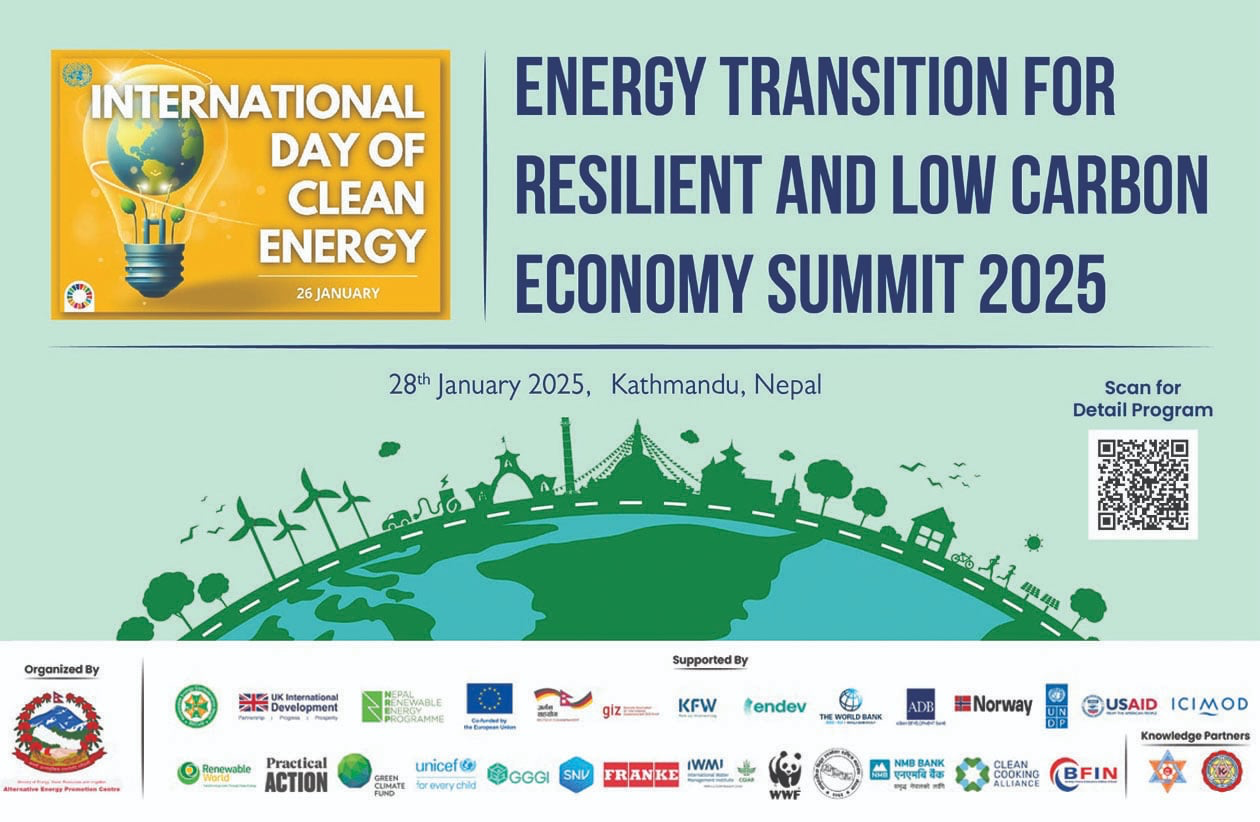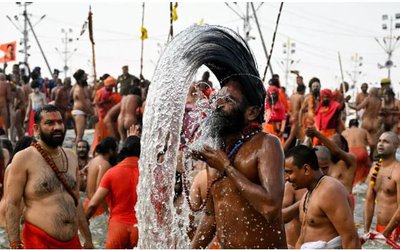
A partial solar eclipse will be visible from across Nepal for about three hours from quarter to eight Thursday morning, according to B.P. Koirala Memorial Planetarium and Observatory and Science Museum Development Committee.
The partial eclipse will appear at the first location at 8:14:53am on Thursday, December 26. It will after that reach the full eclipse stage at 9:019:33am and then move to the maximum eclipse position at 11:02:46 am. Moreover, the solar eclipse will last for a maximum of three minutes and 40 seconds.
The eclipse will commence at 8:15 am. The disc of the Moon will creep over the Sun from its western edge. The maximum eclipse will be around 9.45 am. The eclipse will conclude around 11:31 am.
The Sun is about 400 times bigger than the Moon and also 400 times far away from Earth. This cosmic coincidence makes both the objects appear about the same angular size in the sky. At times, the Moon comes in between the Earth and the Sun and obstructs the view of the Sun partially. That is the partial solar eclipse. At times, all the three celestial objects - Sun, Moon and Earth - may be so perfectly aligned that the Moon will obstruct the full face of the Sun for a brief moment. Then, we get a total solar eclipse. In the same way, the Moon may enter the shadow of the Earth, resulting in Lunar eclipse.
The eclipse can be viewed from Mahendranagar, Kathmandu and Jhapa.
The Kirtipur-based observatory of the Ministry of Education, Science and Technology said it would allow visitors to view the partial eclipse, the last solar eclipse of the year, with the help of a telescope.
The ministry release, however, cautioned the common people not to watch the eclipse with naked eyes, binoculars or telescopes because, it said, that would expose eyes to risks of being damaged.
It said even the reflection of the eclipse on X-ray plates, darkened mirrors and water would potentially harm the eyes.
Only the special glasses, with metallic plating, used by mountain climbers could be used to observe the eclipse, the release advised.
An annular solar eclipse occurs through a narrow corridor sweeping from the Arabian peninsula all the way to the Pacific Ocean via southern India, the bay of Bengal, Singapore and Indonesia. This path is known as the path of annularity.
During the annular solar eclipse, the moon crosses the sun completely centrally.
“This means that the moon’s apparent size in the sky is not large enough to completely cover the sun as witnessed during total solar eclipses,” according to a specialised eclipse portal.
This creates a beautiful “ring of fire” effect, the observatory said in a release it sent out to inform the common people on the science of eclipses.
A partial solar eclipse will also be witnessed from a much larger area of the globe including the Middle East, the Indian Ocean, southern and eastern Asia and north western Australia.
The annular phase of the eclipse begins in the desert of eastern Saudi Arabia. At this point, observers will enjoy 2 minutes and 59 seconds of annularity. However, the sun will only be just over 1 degree in altitude at sunrise on the eastern horizon.
The annular eclipse will then progress in to the Arabian sea after crossing Masirah Island.
The annular phase will not hit landfall until reaching the west coast of southern India. Here the annular path will cross this region in a south-easterly direction with the central line passing just 20 kilometres north of Coimbatore. Coimbatore, with a population of 1.6 million, will be the first major city to see the annular eclipse.
The path of annularity then progresses over the Palk Straight and across the northern tip of Sri Lanka where Jaffna, the capital of the Northern Province, will enjoy an annual solar eclipse lasting 2 minutes and 59 seconds.
The solar eclipse occurring on December 26 is not only the last one this year, but is also going to very special. During the eclipse, the Sun will appear as a‘Ring of fire’ for a brief moment.
What is annular eclipse
The annular solar eclipse is a kind of total solar eclipse. Sun, Moon and Earth are aligned in a straight line. However, on that day, the apparent size of the Moon is smaller than the apparent size of the Sun. Only the central part of the Sun is obstructed. The circular edges of the Sun appear like a bright shining bangle.
The path of the Earth around the Sun and Moon around the Earth is elliptical. When the Earth goes around the elliptical path, at one point, usually around January 5, Earth will be closest to Sun and at another place farthest, generally around July 4. When an object is near, it appears bigger and when faraway appears smaller. When near, the Sun will look bigger and far, bit smaller. Similarly, the Moon passes through the two extreme points, closest and farthest points, about once a month. It takes 27.55 days to complete one revolution from the nearest location to the same position.
If a total solar eclipse occurs when the Sun is relatively closer and Moon far, the apparent size of the Sun will be bigger than the apparent size of the Moon. In that situation, the Moon will not be able to cover the full face of the Sun. While the central part is covered by the Moon, the edges of the Sun will stand out as a ‘Ring of fire’. This is called an annular eclipse.
On December 26, Sun is near to the closest point, and the apparent size will be about 1951 arc-seconds. The Moon, on the other hand, is not near its nearest location and hence its apparent magnitude will be about 1893 arc-seconds. Small Moon will not be able to obstruct the whole disc of the Sun.
How to look at eclipse safely
Any bright object is a threat to our eyes. Staring at bright light might cause harm from temporary discomfort to permanent retinal damage. Hence the advice not to look at a flash of lightning or welding with unprotected eyes. On any day, eclipse or otherwise, do not stare at the Sun. There are two ways to observe the Sun safely. One can use a solar filter (not goggles) specifically made for watching the eclipse. Or one can project the image of the Sun using a telescope or pinhole camera (do not look at the Sun directly with a telescope or pinhole camera). Using exposed x-ray films or smoked glass is not safe enough.
Does Sun emit any ‘harmful rays’ during the eclipse?
Eclipse is an apparent phenomenon. Just like an umbrella or tree obstructs the Sun and provides shade, in case of an eclipse, Moon obstructs, and its shadow falls on the Earth. Therefore, it is not an event occurring in the Sun or a phenomenon that affects it. Hence no mysterious rays emanate from Sun during an eclipse. Fearing a shadow is not human.
Then, what about Rahu and Ketu
The mythology of Rahu and Ketu is deeply ingrained in the cultural psyche in India. However, ancient Indian astronomers like Aryabhatta and Lallacharya have stoutly rejected them. In fact, as far as Indian astronomy is concerned, Aryabhatta was the first to present a cogent naturalistic and scientific explanation to eclipses. In his work Aryabhattiyam, written about 1,500 years ago, he said, the shadow of Moon falling on a location results in a solar eclipse and when the Moon enters the Earth’s shadow lunar eclipses occur. Lallacharya’s work Sishyadhivruddhida tantra, a handbook for students of astronomy, written 1300 years ago, unambiguously rejects Rahu-Ketu myths and Puranic claims.
Scientific heritage of Indian culture is rooted in the rational and logical works of Aryabhatta and Lallacharya and not baseless myths.
Eating and going out during the eclipse
Unlike the fake claims being circulated in social media, various studies have shown that cooked food does not get spoiled, nor going out and watching the eclipse is harmful. It is a natural celestial show.
When is the solar eclipse in December, timings?
According to the details available on Norway-based TimeandDate.com, the annular solar eclipse 2019 will be visible from most of Asia including South India as well as certain parts of North/ East Africa and North/ West Australia.
- The Government and the Private Sector Needs a Close Collaboration for the development of the IT Sector: President Dhaka
- Feb 07, 2025
- Governmen Downsizes budget to Rs 1692.7 Billion
- Feb 07, 2025
- Weather Forecast: Mainly Fair In Kathmandu Valley
- Feb 07, 2025
- Don’t Obstruct Infrastructure Development Works: FNCCI President Dhakal
- Feb 06, 2025
- The Duke of Edinburgh Meets Beneficiaries Of Duke of Edinburgh’s International Award
- Feb 06, 2025
















